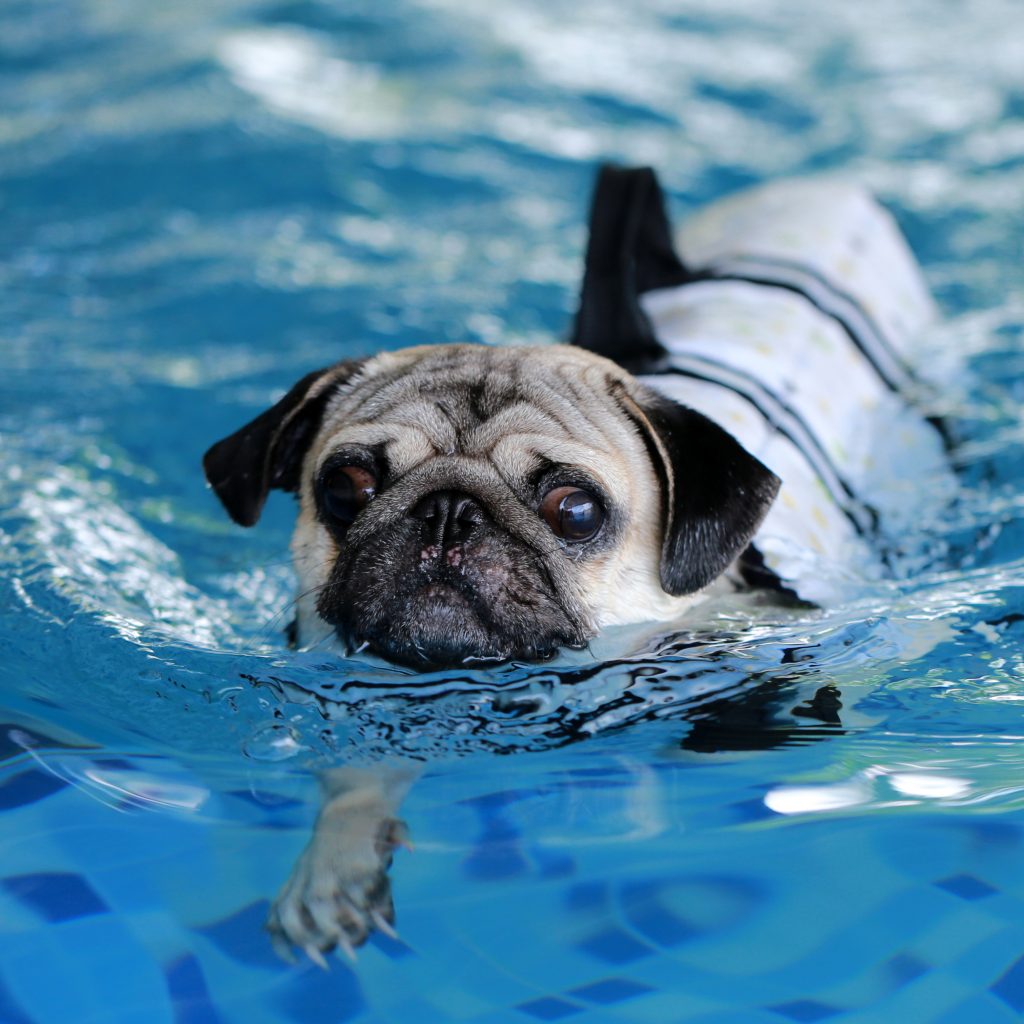Pugs do swim but don’t do well staying afloat. So, it would be best if you started at a shallow point.
You can hold the Pug with you in the lake or pond; slowly lower your Pug. When the pup senses the water, he will instinctively paddle. Some Pugs will even swim in the air! As you move your Pug closer to the water, she may start to paddle without even touching the water.
Your Pug dog will likely reject the water for the first time. At this point, don’t force him. You may take him out of the water and comfort him by hugging and giving soft words to encourage him. Let him know you are there. As always, a couple of treats help also!
Another way is you can hold the Pug close to your chest to let him feel your protection. Then lower yourself to the water. This will allow your Pug to know that the water is not dangerous. I find this is the best way, especially the first few times you take your Pug for a swim.
You can also apply the second technique for a swimming pool.
It would help if you stayed patient in both ways. Your dog may reject the water a few times before he gets the point.
The key thing is you are always there, holding your Pug securely as he progresses. Your Pug also needs your aid to hold him while he’s learning to use the legs under the water.

